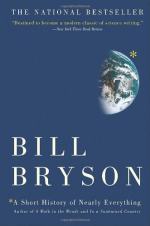
|
| Name: _________________________ | Period: ___________________ |
This quiz consists of 5 multiple choice and 5 short answer questions through Part 5, Chapter 24.
Multiple Choice Questions
1. Of the available land on Earth, how much is suitable for people to live on?
(a) 3 percent.
(b) 47 percent.
(c) 12 percent.
(d) 26 percent.
2. Which of the following is not one of the five major extinction episodes on Earth?
(a) Toarcian.
(b) Devonian.
(c) Triassic.
(d) Cretaceous.
3. Mitochondria convert food and oxygen into ATP, which is what?
(a) A self-destruction signal.
(b) Energy used by the body.
(c) Waste that needs to be discarded.
(d) A new generation of mitochondria.
4. What did the French Compte de Buffon claim about the New World (the Americas) compared to the known Old World?
(a) Diseases of the New World would be much more deadly than in the Old World.
(b) The New World was much more fertile than the old.
(c) Everything was smaller and inferior in the New World.
(d) Unusual, enormous species would be found in the New World.
5. After noticing an unusual phenomenon with uranium salts and a photographic plate, Henri Becquerel asked one of his graduate students to investigate the matter. Who was this student?
(a) René Just Haüy.
(b) Louise Désirée Lorieux.
(c) Marie Curie.
(d) Wilhelm Conrad Röntgen.
Short Answer Questions
1. In 1971, Mike Voorhies discovered an amazing fossil bed in Nebraska full of skeletons of prehistoric animals killed 12 millions years ago. How did they die?
2. The troposphere is the layer of atmosphere:
3. Scientists eventually figured out that certain unusual rocks near Manson, Iowa, were not because of ancient volcanic activity as they first surmised, but the result of what?
4. When the KT meteor that killed the dinosaurs hit Earth, what percentage of life on the planet perished?
5. An asteroid strike on Earth would most likely affect the climate for how long?
|
This section contains 316 words (approx. 2 pages at 300 words per page) |

|




